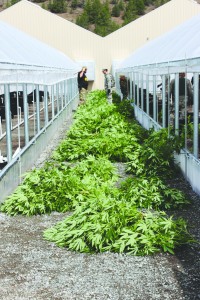
When the laws concerning the domestic cultivation of cannabis (in all its forms) are discussed in common discourse, the conversation tends to be divided along the bilateral lines of federal and state law. But there is a further element to the issue that often fails to be addressed, and it’s an important one: the ability for cannabis to be cultivated on Native American land.Through a system of government known as tribal sovereignty, the country’s third legal structure is the jurisdiction that permits tribes to govern themselves, manage tribal property, and regulate business and domestic relations. It further acknowledges the existence of a government-to-government relationship between the individual tribe and the federal government. In short, it can be considered in a similar fashion to the relationship between state and federal law, with tribal sovereignty taking the place of the state.
The most widely documented instance of tribal sovereignty are casinos located on Native land in states that do not permit gambling. It is at times a controversial issue. Why do tribal governments invest in industries that are prohibited in the surrounding state? Because doing business on tribal land is difficult. Reservations often lack the infrastructure required to support enterprise that would be taken for granted elsewhere in the US. To somewhat redress the balance, Native American economists have learned to find niches in order to bring investment to the reservations.
And LaDuke is not alone in her operation.In April, the Confederated Tribes of the Colville Reservation in north-central Washington reported a harvest of 60 acres of hemp, while in the remote hamlet of Mandaree, North Dakota, hemp economist Waylon Pretends Eagle is working to resist the fracking industry by “growing good medicine,” in a profit-sharing venture for the entire tribe. But it has not been easy. Tribal sovereignty has been subject to abuse over the years, and the Native American cannabis industry is the most recent to be attracting the heat. Between 2000 and 2016, reservations such as Pine Ridge and the Navajo Nation, where ordinances had been passed for growing industrial hemp, continued to see their crops seized by non-tribal law enforcement. As recently as 2015, the entire Menominee hemp crop was seized by the DEA in Wisconsin.
However, after decades of legal contests in support of hemp and the defense of tribal sovereignty, progress is now being made. In March 2016, the US District Judge of South Dakota lifted the injunction that stopped Pine Ridge hemp pioneer Rosebud White Plume from growing hemp on his farm, while in winter 2017, Wisconsin legalized industrial hemp. At the time of writing, the Menominee, Oneida and the St. Croix Band of Ojibwe all plan to grow hemp this year.

